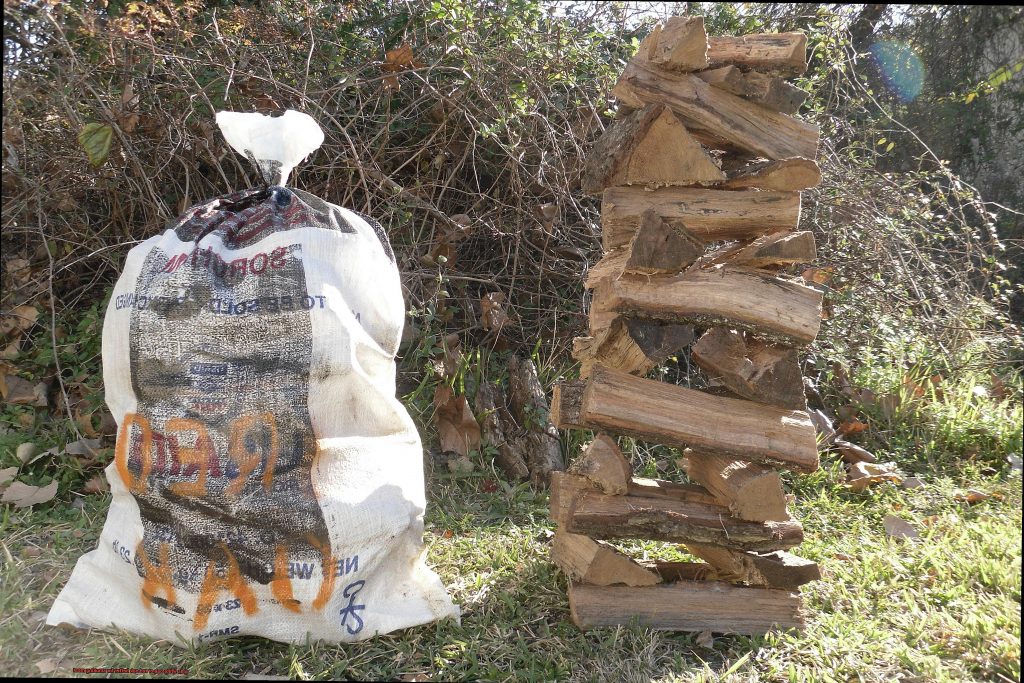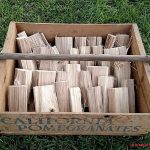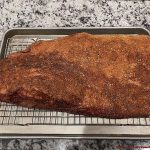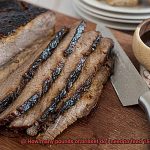Do you long for a meaty dish that bursts with flavor? Do you want to take your taste buds on a smoky journey that leaves them wanting more? Look no further, because smoking your meat is the answer. But hold up, before you start puffing away, there’s one crucial factor that can make or break your smoking experience: the type of wood you use.
When it comes to smoking, oak is a go-to choice for grill masters and enthusiasts alike. But which oak reigns supreme – white or red oak? These two hardwoods are abundant in North America and share some similarities, but they differ in many ways. And these differences could have an impact on the flavor profile and overall outcome of your smoked meat.
In this post, we’ll delve into the nitty-gritty of white oak and red oak. We’ll explore their unique qualities and evaluate their smoking potential. So grab your apron, kick back, and let’s dive into the world of smoking meat with white oak versus red oak.
Contents
What is White Oak?
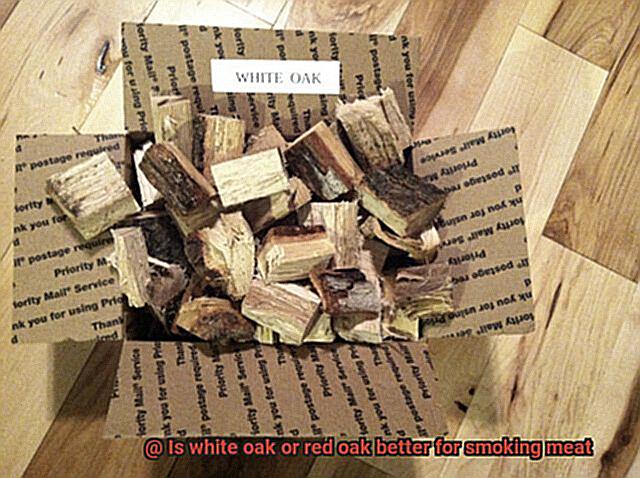
White oak is a popular choice for smoking meat due to its unique flavor and consistent burning properties.
White oak is a hardwood native to North America and commonly found in the eastern United States. What makes it a great option for smoking meat is its dense grain, which allows it to burn slowly and produce a consistent heat source. This slow-burning characteristic also means that white oak produces less ash than other woods, making clean-up easier after a long smoking session.
One of the standout qualities of white oak is its flavor profile. It adds a sweet and nutty taste to meat being smoked, which pairs well with various meats, including beef, pork, and poultry. Unlike some other woods, white oak produces a light-colored smoke that doesn’t overpower the natural flavors of the meat.
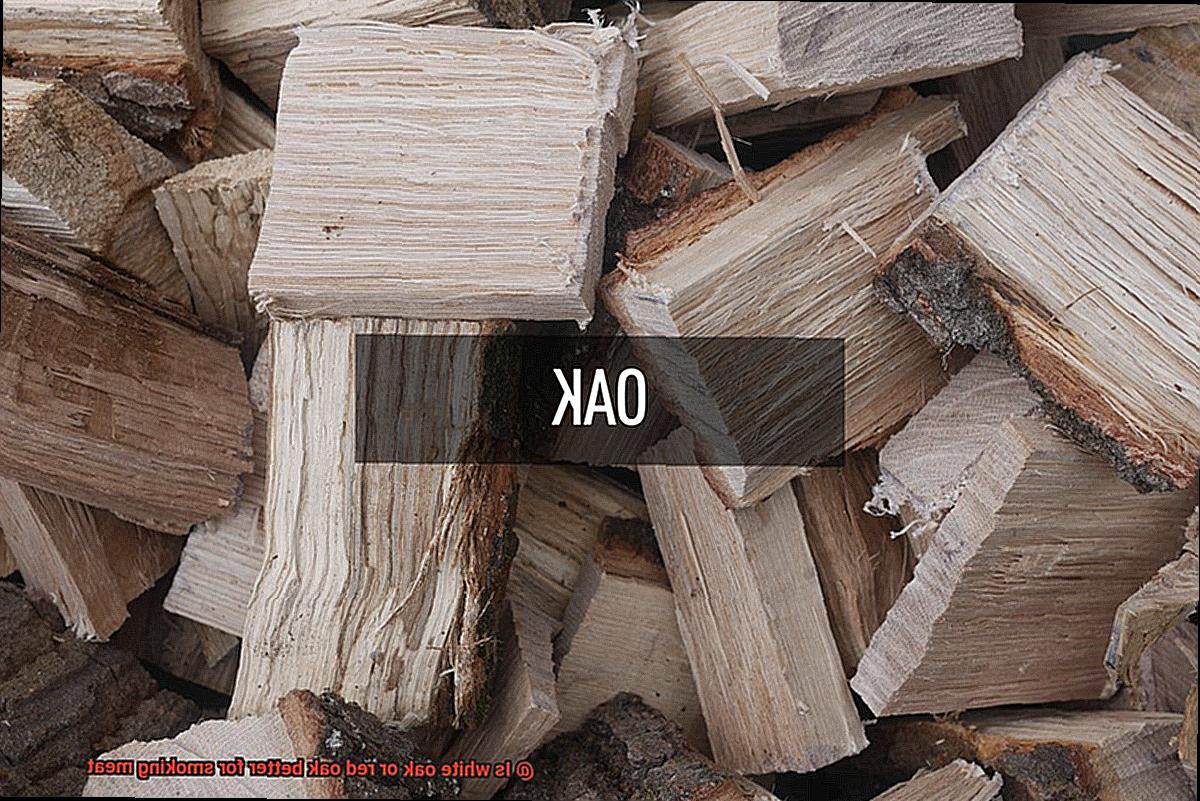
Apart from smoking meat, white oak is commonly used in furniture, flooring, and barrels for aging wine and whiskey. Its strength and durability make it an excellent choice for these applications too.
Choosing the right type of white oak wood is essential when smoking meat. Opt for high-quality wood that has been seasoned properly. Seasoned white oak has lower moisture content, enabling it to burn more efficiently and produce less smoke, resulting in a cleaner, more consistent smoke flavor in the meat being cooked.
So why should you choose white oak over other types of wood? It all comes down to personal preference and the meat you’re smoking. If you prefer a milder smoke flavor and are smoking beef or pork, white oak is an excellent choice. However, if you’re looking for a stronger smoke flavor or are smoking game meats, red oak may be the better option.
What is Red Oak?
Then, you need to know about Red Oak – the go-to wood for pitmasters across North America. As an expert on this topic, let me tell you all about the wonders of Red Oak.
Red Oak is a type of oak tree that grows in North America and is known for its dense, hard wood with a distinctive reddish-brown color. Its strength and durability make it popular in construction and furniture-making industries. But its smoky flavor is what really makes it stand out in the world of meat smoking.
What sets Red Oak apart is its medium to heavy smoke flavor that adds a slightly sweet and nutty taste to your meat. It pairs exceptionally well with beef, pork, and game meats like venison or elk. And because it burns slower than other woods, it’s perfect for long smoking sessions where consistency is key.
Speaking of consistency, Red Oak produces consistent heat due to its dense wood burning hotter and longer than other woods. This helps maintain steady temperatures in your smoker and ensures your meat gets that perfect smoky flavor.
But it’s not all about the flavor. Red Oak also produces less ash than other woods, which makes clean-up a breeze after a long smoking session. This practical benefit is a welcome bonus to any pitmaster.
Advantages of White Oak for Smoking Meat
One of the standout features of white oak is its subtle yet distinct flavor profile. Its smoke has a mild sweetness that beautifully complements the natural flavors of the meat, resulting in a rich and complex taste that’s not too overpowering. This makes it an ideal choice for smoking delicate meats like fish and poultry.
But white oak’s advantages don’t stop there. Its versatility is another key factor that sets it apart from other woods. Whether you’re smoking beef, pork, chicken, or seafood, white oak delivers consistent heat and a clean smoke that won’t leave behind any unwanted bitter aftertaste. This means you won’t have to switch between different woods for different meats – white oak can do it all.
Speaking of clean smoke, this is another significant advantage of using white oak for smoking meat. The smoke it produces doesn’t leave any unpleasant aftertaste, ensuring that your meat will have a pure and delicious smoky flavor. This is essential because any unwanted flavors can quickly ruin the taste of smoked meat.
Finally, white oak is readily available and affordable, making it a convenient option for anyone looking to try their hand at smoking meat. You can easily find it at most hardware or home improvement stores.
Advantages of Red Oak for Smoking Meat
When it comes to smoking meat, the type of wood you choose can make or break your BBQ game. While white oak may be a trusted option, red oak is a true superstar that can take your meat to new heights. So what are the advantages of using red oak for smoking meat? Let’s dive in.
First and foremost, the flavor. The sweet and smoky taste of red oak perfectly complements an array of meats, whether it’s beef, pork, or poultry. What’s more, the flavor isn’t overpowering, allowing the natural taste of the meat to shine through. It’s like adding an extra layer of deliciousness that’ll have your guests begging for seconds.
But that’s not all. Red oak’s slow burn time ensures that your meat is cooked thoroughly and evenly, making it tender and juicy every time. And when it burns, it produces a mild and sweet aroma that’ll have your mouth watering in anticipation.
Availability is another advantage of red oak. It’s a widely available hardwood in most regions of the United States, so you won’t have to travel far to get your hands on some. Plus, it’s relatively affordable compared to other hardwoods like mesquite or hickory.
Finally, red oak is versatile. Whether you’re using logs, chips, or chunks, you can experiment with different methods and techniques to achieve your desired flavor profile. Whether you’re smoking on a grill or in a smoker, red oak can be adapted to suit your needs.
Factors to Consider when Choosing Wood for Smoking Meat
Then let’s explore the essential factors to consider when choosing wood for smoking meat. As any seasoned pitmaster will tell you, the type of wood used can make all the difference in the flavor and aroma of your finished product.
First and foremost, let’s talk about flavor. Different woods impart various flavors to the meat, so it’s crucial to choose the right one for your desired taste. While hickory gives a strong, smoky flavor, fruitwoods like apple and cherry provide a sweeter, milder taste. When it comes to white oak versus red oak, white oak has a more neutral taste that pairs well with most meats. In contrast, red oak has a slightly sweeter and nuttier flavor that works best with beef and pork.
The burn rate of the wood is another critical factor to consider. Hardwoods like oak tend to burn longer than softwoods like pine. If you’re planning on using a low and slow smoking method like brisket or pulled pork, white oak is an excellent choice because it burns slower than red oak.
Availability is another consideration when choosing wood for smoking meat. Depending on where you live, one type of wood may be more readily available than the other. White oak is more prevalent in the eastern United States, while red oak is commonly found in western states.
Lastly, moisture content is essential for producing a successful smoking experience. Wood that is too wet can produce too much smoke and result in an unpleasant flavor. It’s vital to use seasoned wood with a moisture content of around 20%. Both white and red oak are suitable for smoking when properly seasoned.
Tips for Using White Oak and Red Oak in Smoking Meat
Smoking meat is an art form that requires the perfect combination of heat, time, and wood. Choosing the right wood can make or break your masterpiece, and two popular options are white oak and red oak. While both types of oak can enhance the flavor of your meat, they do have some notable differences.
White oak is a slow-burning wood that produces a milder and sweeter smoke flavor. Its even burn makes it ideal for long smoking sessions, while its light-colored smoke won’t overpower the natural flavors of the meat. White oak is a versatile option for a variety of meats, including pork, beef, and poultry.
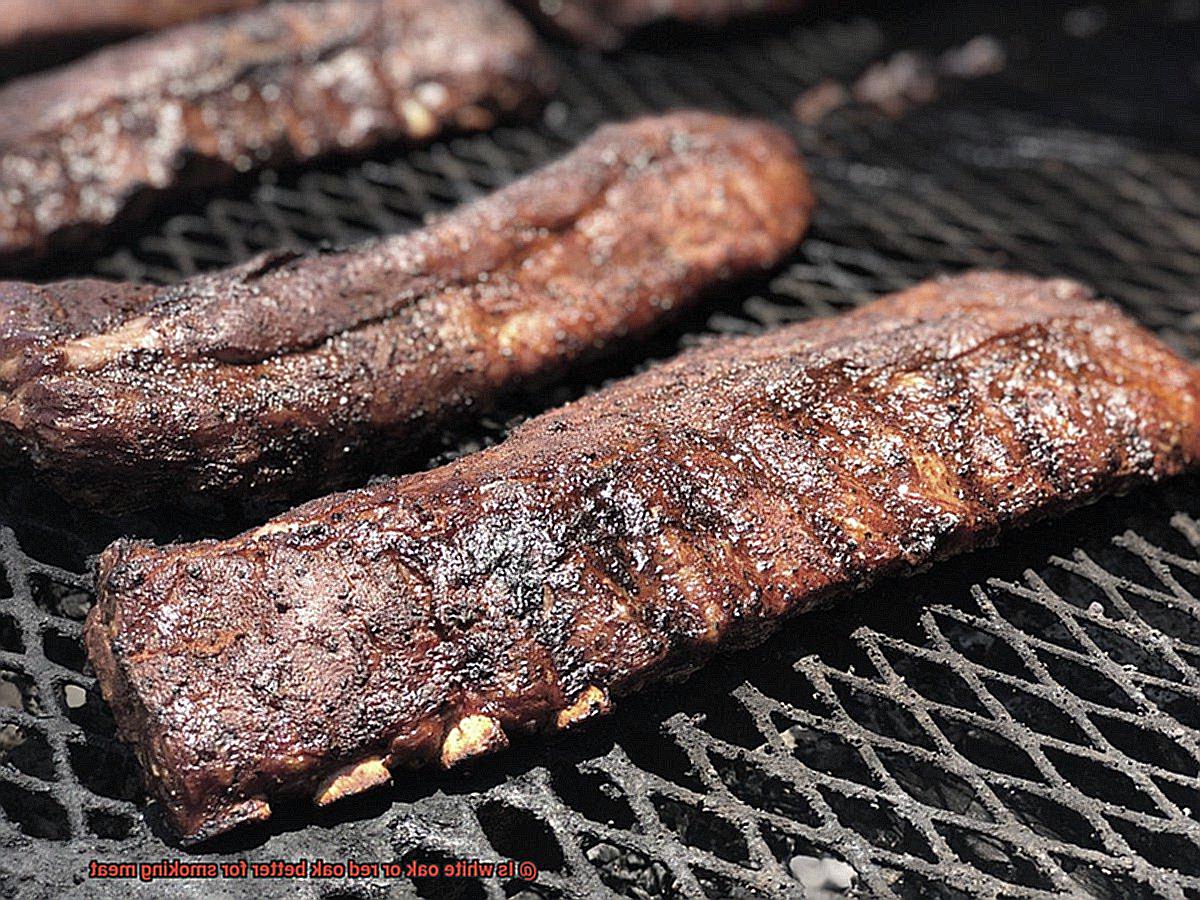
Red oak, on the other hand, has a bolder and more assertive flavor with a hint of smokiness. It burns hotter and faster than white oak, making it better suited for shorter smoking sessions. Red oak is often used for smoking game meats and heavier cuts of beef that require a stronger smoke flavor.
When it comes to using white oak or red oak for smoking meat, there are some tips to keep in mind to ensure your meat turns out perfectly:
Use seasoned wood
Freshly cut wood contains too much moisture and can produce an unpleasant taste when burned. Make sure to use seasoned wood that has been allowed to dry out for at least six months.
Don’t over-smoke
Too much smoke can overpower the natural flavors of the meat. Aim for a light smoke that enhances the flavor without overwhelming it.
Monitor the temperature
Oak burns hot, so it’s important to keep an eye on the temperature to avoid overcooking your meat.
Experiment with different cuts of meat
Different cuts of meat will react differently to the smoke from white oak and red oak. Experiment with different cuts to find the perfect combination of flavor and texture.
He-Nw5-LMrE” >
Conclusion
Smoking meat is a culinary art that demands precision, skill, and the right type of wood. The choice of wood can make or break your masterpiece, and two popular options are white oak and red oak. While both types of oak can enhance the flavor of your meat, they have some notable differences that set them apart.
White oak’s subtle yet distinct flavor profile makes it a versatile option for smoking different meats. Its even burn is perfect for long smoking sessions, while its light-colored smoke won’t overpower the natural flavors of the meat. Red oak, on the other hand, has a bolder and more assertive flavor with a hint of smokiness. It burns hotter and faster than white oak, making it ideal for shorter smoking sessions.
To achieve the perfect smoky flavor when using either type of oak for smoking meat, seasoned wood that has been allowed to dry out for at least six months is essential. Additionally, monitoring the temperature and avoiding over-smoking are crucial factors in achieving mouth-watering results.
Whether you choose white oak or red oak comes down to personal preference and the type of meat being smoked. Both have their advantages and can produce delicious results when used correctly.

